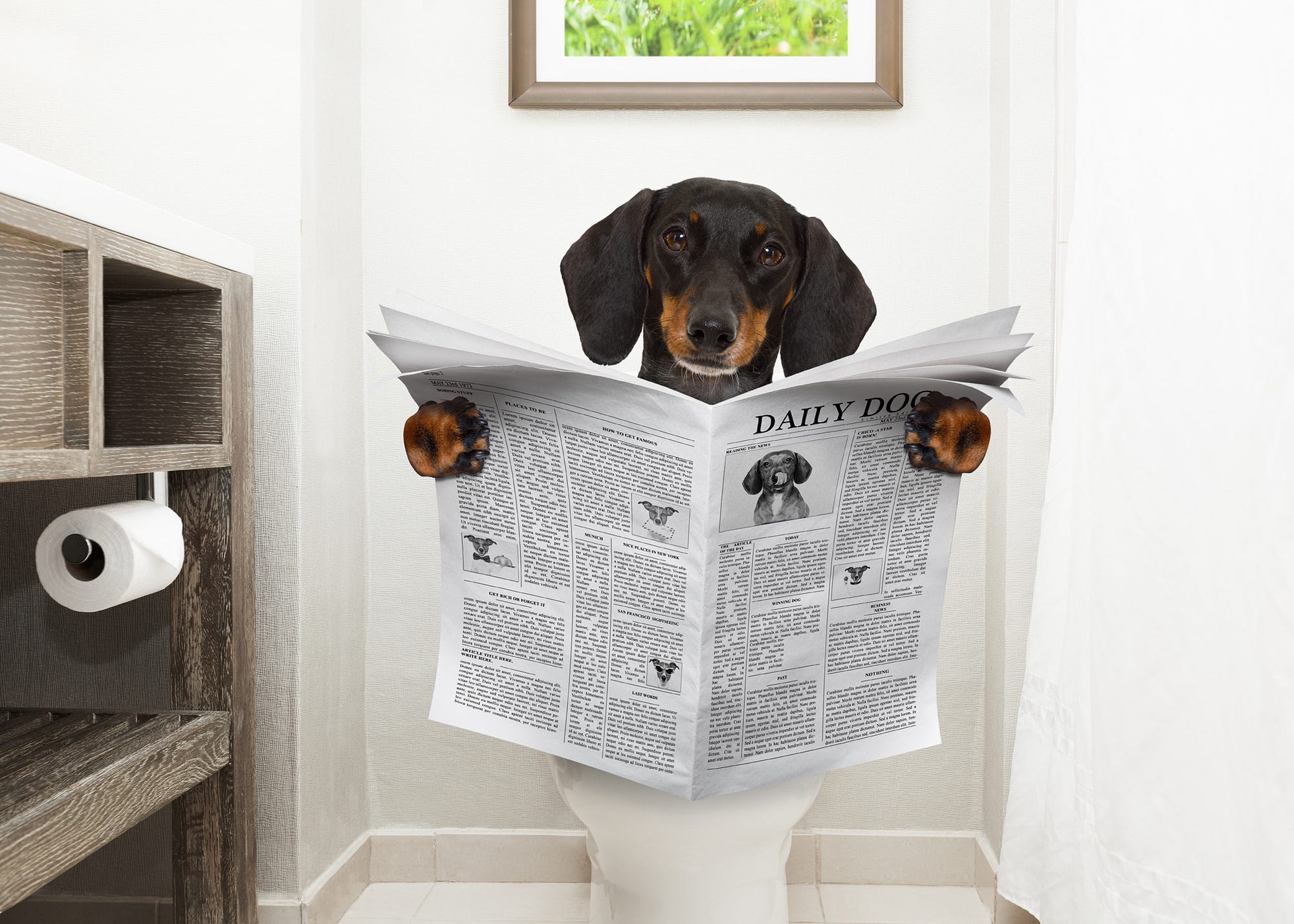Essential Issues Regarding Flushing Animal Waste Down the Toilet
Essential Issues Regarding Flushing Animal Waste Down the Toilet
Blog Article
The content following next pertaining to Don't Flush Your Pets Poo Down The Loo, Vet Warns is pretty much motivating. Read on and make your own ideas.

When it involves taking care of waste, particularly animal waste, lots of people typically turn to the hassle-free choice of flushing it down the bathroom. Nevertheless, this apparently simple remedy can have significant repercussions for the atmosphere and public health. In this write-up, we'll explore why flushing pet waste down the commode is a negative idea and provide different approaches for proper disposal.
Intro
Appropriate garbage disposal is critical for keeping environmental sustainability and public health. While it may appear safe to purge animal waste down the bathroom, it can result in numerous concerns, both for the environment and human well-being.
Threats of flushing animal waste
Environmental effect
Flushing animal waste introduces harmful bacteria and pathogens right into rivers, which can adversely influence marine ecological communities. These virus can pollute water sources and injury marine life, interfering with fragile environments.
Public health issues
Pet waste consists of hazardous microorganisms such as E. coli and Salmonella, which can position significant health and wellness risks to people. Purging animal waste down the commode can contaminate water materials, bring about the spread of diseases and infections.
Alternatives to flushing
As opposed to flushing pet waste down the commode, there are several alternate disposal approaches that are extra environmentally friendly and sanitary.
Composting
Composting animal waste is a green way to get rid of it. By composting, raw material is broken down right into nutrient-rich dirt, which can be used to fertilize gardens and plants.
Garbage dump disposal
Taking care of pet waste in a garbage dump is one more option. While not as eco-friendly as composting, it is a more secure option to flushing, as it avoids the contamination of water resources.
Animal waste disposal systems
There are customized family pet garbage disposal systems readily available that securely and hygienically dispose of pet waste. These systems typically utilize enzymes to break down waste and eliminate smells.
Steps to correct pet waste disposal
To guarantee appropriate disposal of pet waste, adhere to these steps:
Scooping and nabbing waste
Routinely scoop and bag animal waste making use of naturally degradable bags. This stops waste from polluting the atmosphere.
Making use of designated waste containers
Dispose of bagged animal waste in assigned waste containers, such as compost bins or landfill containers. Avoid flushing it down the commode whatsoever prices.
Cleaning up litter boxes and animal locations regularly
Frequently clean litter boxes and pet locations to prevent the buildup of waste and bacteria. Use pet-safe cleansing products website to preserve health.
Advantages of correct disposal methods
Taking on correct disposal techniques for pet waste offers numerous advantages:
Minimized environmental pollution
Correct disposal techniques decrease the risk of environmental pollution, securing rivers and environments from contamination
Lessened danger of water contamination.
By avoiding flushing pet waste down the bathroom, the risk of water contamination is significantly minimized, protecting public health.
Enhanced sanitation and health
Appropriate disposal approaches advertise better sanitation and hygiene, creating a much safer environment for both people and pets.
Final thought
In conclusion, purging animal waste down the commode is dangerous to the environment and public health. By adopting alternative disposal methods and adhering to correct waste administration methods, we can lessen the negative impact of pet waste and contribute to a cleaner, much healthier earth.
What To Do With Dog Poo – The Do's And Don'ts Of Disposing Of Faeces
Dog poo bins
Some councils provide dedicated dog waste bins in popular dog-walking areas that can take dog poo that has been bagged but you can legally dispose of dog waste in any public litter bin, as long as it is securely bagged. This also applies to your wheelie bin at home.
Do not flush
Water companies do not recommend flushing dog faeces down the toilet because certain parasites can survive the water processing treatment and are potentially harmful to humans. You should also never consider flushing dog poo that has been bagged down the toilet as the bags will not break down and instead create severe blockages in the sewage system.
In the woods
The Forestry Commission promotes a ‘stick and flick’ method for dealing with waste in the woods. This means finding a stick and using it to flick any poo from off the path so that it is out of the way of other walkers. You could also bury it as long as it is not in an area where there might be livestock.
Livestock
Parasites found in dog poo can be transmitted to livestock if they inadvertently eat infected faeces that has been left on grazing land. This could result in the death of sheep or abortion in cattle so you should always make sure you pick up your dog’s waste in fields where livestock could be present.

Frequently clean litter boxes and pet locations to prevent the buildup of waste and bacteria. Use pet-safe cleansing products website to preserve health.
Advantages of correct disposal methods
Taking on correct disposal techniques for pet waste offers numerous advantages:
Minimized environmental pollution
Correct disposal techniques decrease the risk of environmental pollution, securing rivers and environments from contamination
Lessened danger of water contamination.
By avoiding flushing pet waste down the bathroom, the risk of water contamination is significantly minimized, protecting public health.
Enhanced sanitation and health
Appropriate disposal approaches advertise better sanitation and hygiene, creating a much safer environment for both people and pets.
Final thought
In conclusion, purging animal waste down the commode is dangerous to the environment and public health. By adopting alternative disposal methods and adhering to correct waste administration methods, we can lessen the negative impact of pet waste and contribute to a cleaner, much healthier earth.
What To Do With Dog Poo – The Do's And Don'ts Of Disposing Of Faeces
Dog poo bins
Some councils provide dedicated dog waste bins in popular dog-walking areas that can take dog poo that has been bagged but you can legally dispose of dog waste in any public litter bin, as long as it is securely bagged. This also applies to your wheelie bin at home.
Do not flush
Water companies do not recommend flushing dog faeces down the toilet because certain parasites can survive the water processing treatment and are potentially harmful to humans. You should also never consider flushing dog poo that has been bagged down the toilet as the bags will not break down and instead create severe blockages in the sewage system.
In the woods
The Forestry Commission promotes a ‘stick and flick’ method for dealing with waste in the woods. This means finding a stick and using it to flick any poo from off the path so that it is out of the way of other walkers. You could also bury it as long as it is not in an area where there might be livestock.
Livestock
Parasites found in dog poo can be transmitted to livestock if they inadvertently eat infected faeces that has been left on grazing land. This could result in the death of sheep or abortion in cattle so you should always make sure you pick up your dog’s waste in fields where livestock could be present.

I was shown that write-up about through an associate on a different web page. Liked our blog? Please quickly share it. Help someone else discover it. I recognize the value of your readership.
Click Here To Read More Report this page